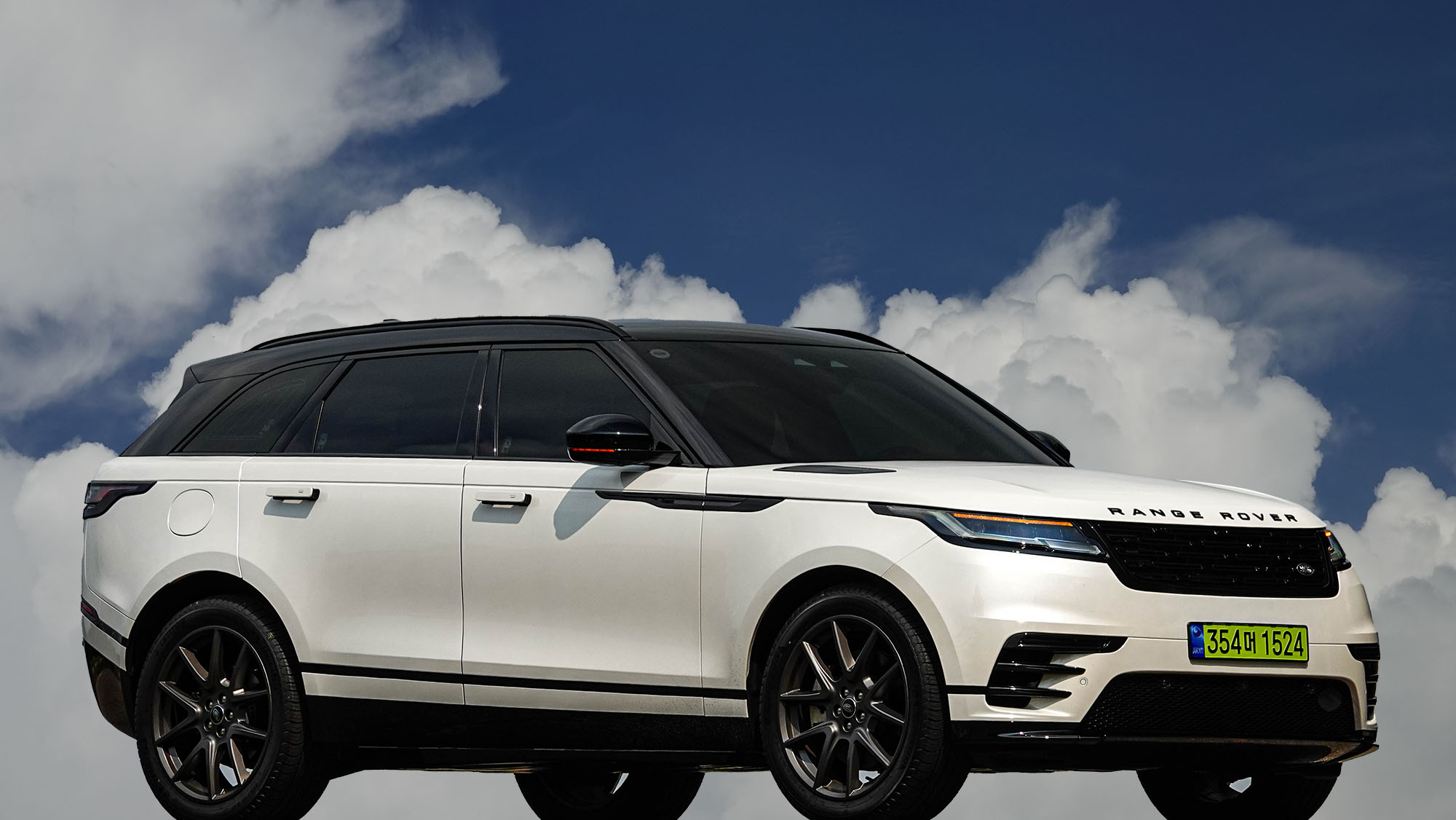The Range Rover has become more approachable, particularly the Velar. The P250 model is priced at 90.1 million won, while the upper trim, the P400 HSE, is 124.2 million won. Though still expensive, it isn’t out of reach. Its accessibility makes the Velar a welcome addition to the Range Rover lineup. There’s no need to tag it as a British premium SUV; just calling it ‘Range Rover’ suffices.
Simplicity adds to its luxury—this applies to both the exterior and interior. It’s not flashy, yet it is far from plain. It is simple yet elegant, showcasing higher quality through restrained lines and surfaces. By eliminating excess, it fills itself well.
The dashboard features only an 11.4-inch touchscreen monitor. There’s little else present. The hazard lights and engine start button are discreetly positioned, barely visible unless specifically sought. Within that monitor resides Land Rover’s proud Pivi Pro infotainment system. Nearly all of Velar’s functions can be accessed, confirmed, and operated through this screen, with most tasks achievable by just two screen taps. Driving information is relayed through a head-up display and a 12.3-inch instrument cluster. The crisp display alleviates stress.
The steering wheel turns 2.4 times from lock to lock. At dimensions of 4,797 x 1,930 x 1,678 mm, the steering ratio is well-suited to the vehicle’s size. It may also be wise to set up the steering to allow for a three-turn margin considering off-road driving, where a bit more room is often preferable. The wheelbase is 2,874 mm. The rear seats offer adjustable backrest angles for a comfortable posture and can even fold flat for laying down. The trunk space starts at a generous 735 liters and can expand to 1,798 liters with the seats down.
The Meridian 3D surround audio system, equipped with 17 speakers and a 750W amplifier, provides a distinct sound experience inside the cabin. The acoustic resonance differs, and active noise cancellation reduces outside noise, keeping the interior quiet. It reportedly reduces noise levels by around -4dB.
It features a 3.0-liter inline 6-cylinder Ingenium gasoline engine. With a mild hybrid system, it recovers lost energy during deceleration using the BiSG (Belt-integrated Starter Generator) and stores it in a 48V lithium-ion battery. Engine stop/start functionality is smooth, improving acceleration efficiency.
Through an 8-speed automatic transmission, the engine produces a maximum output of 400 horsepower and torque of up to 56.1 kgm. The vehicle also weighs over 2 tons, with a kerb weight of 2,190 kg. It feels like a middleweight boxer, robust with strong punches. With such power, it effortlessly moves its hefty frame. According to the manufacturer, it reaches 100 km/h in 5.5 seconds. Based on GPS measurements, we clocked the 0-100 km/h acceleration at 6.65 seconds. The substantial power overcomes the heavy mass.
In sports mode, it marks 1,600 rpm at 100 km/h in 8th gear and 5,500 rpm in 3rd gear. It rushes with a raspy breath in 3rd, yet purrs smoothly in 8th gear. When activating the driving assistance system, it autonomously adjusts following distance, lane maintenance, and speed—making it almost trustworthy on designated roadways. However, drivers should recognize their responsibility to remain focused on driving.
With tire dimensions of 265/45R21, the wheel arches are perfectly filled. As you start and move off, the premium SUV feel is immediate. While the road conditions may not be ideal, it handles well, displaying both toughness and suppleness as needed.
Adaptive Dynamics and electronic air suspension optimally control the vehicle’s body. Adaptive Dynamics monitors wheel movements up to 500 times per second and body movements up to 100 times per second, achieving the best ride comfort and steering performance.
Air suspension raises the ground clearance up to 251 mm. This high clearance greatly enhances off-road capabilities, especially when fording through water.
However, there’s a dilemma. With the risk of body scratches, undercarriage collisions, and tire damage, it’s challenging to take the Range Rover off-road due to its high cost. Despite being off-road capable, few owners dare to push a premium brand like Range Rover to such limits because of the repair costs. Truly, a Range Rover owner who braves the off-road is a true affluent individual.
During a 55 km trip between Paju and Seoul, I checked the fuel economy. Driving economically in eco mode yielded 10.5 km/L. The certified combined fuel economy is 8.2 km/L. With prudent driving techniques, one may aspire for double-digit fuel economy.
Direct feedback from Oh Jong-hoon
As an imported vehicle, its language support is weak. The voice command system is inflexible. If the command isn’t precise, it doesn’t respond. Saying, “Set indoor temperature to 20 degrees” receives a response of “I’m sorry. I didn’t understand.” Conversely, stating, “Temperature 20 degrees” adjusts the temperature. This applies to other commands as well. You must be familiar with the command list and request accurately per its defined sentences or word combinations to receive a proper response. It doesn’t meet the expectations of Korean consumers growing accustomed to AI-based natural language commands.
The center console cover is split left and right, but this proves inconvenient. When storing larger items, both sides need to be opened, making it cumbersome to manage. A single-piece cover would be preferable.
Oh Jong-hoon yes@autodiary.kr

